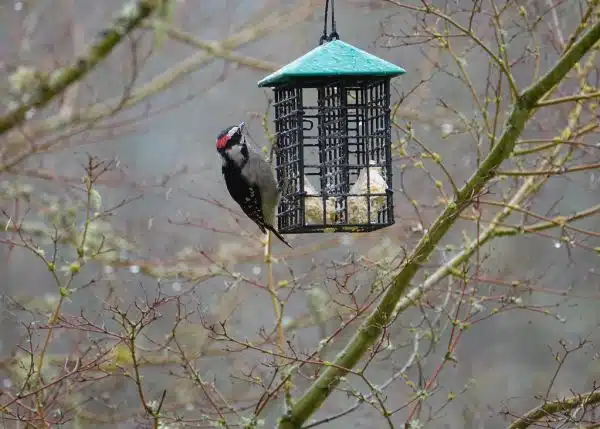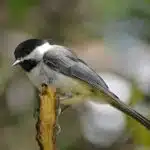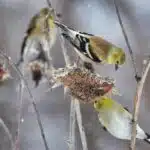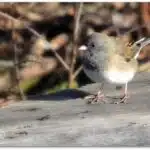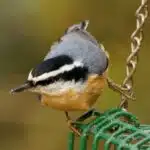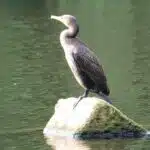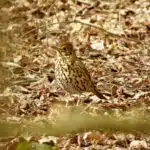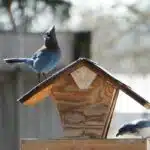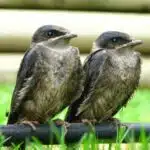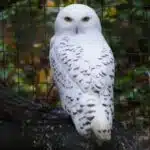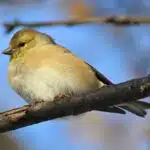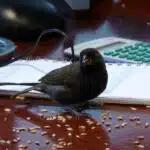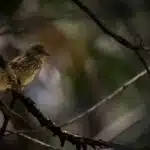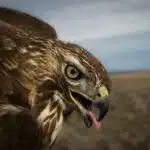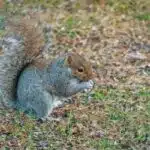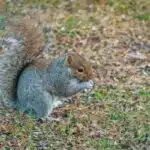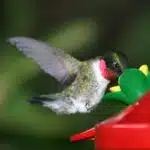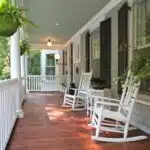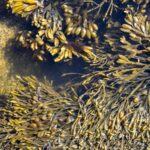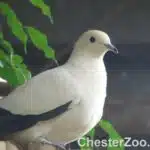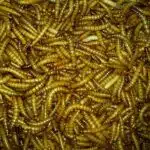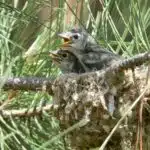Woodpeckers are fascinating birds that are commonly found in North America, Europe and Asia. These birds have a unique behavior of pecking on trees to find insects for their food. They are also known for their drumming sounds that they make by pecking on trees, which is a part of their communication system. There are over 200 species of woodpeckers around the world, and attracting them to your yard can be an enjoyable experience for bird enthusiasts.
Creating a habitat for woodpeckers in your backyard is not only beneficial for these birds but also helpful for the environment. Woodpeckers play an important role in forest ecosystems as they help control insect populations and create homes for other wildlife. In this article, we will discuss how to attract woodpeckers to your yard using various techniques such as providing food sources, creating nesting sites, and offering suitable habitats. By following these steps, you can enjoy the sight and sound of woodpeckers while contributing to the conservation of these remarkable birds.
Understanding Woodpecker Behavior And Habitat
Imagine walking through a dense forest, surrounded by the sounds of chirping birds and rustling leaves. Suddenly, you hear an unfamiliar tapping sound that echoes through the woods. Following the noise, you come across a woodpecker rapidly pecking away at a tree trunk. The bird’s unique foraging strategy and communication techniques make it one of the most fascinating species in nature.
Woodpeckers are known for their distinctive tapping and drumming sounds that can be heard from afar. These noises are not just random but serve as an important form of communication among woodpecker species. They use these sounds to signal their territory, attract mates, and communicate with other individuals in their group. Additionally, woodpeckers have adapted to using their strong beaks to excavate holes in trees to search for insects or create nesting sites.
Understanding woodpecker habitat preferences is crucial when trying to attract them to your yard. Woodpeckers prefer mature forests with plenty of dead or decaying trees as they provide an abundant source of food and nesting opportunities. They also tend to avoid areas with minimal tree cover or heavily developed urban environments. By providing a suitable habitat that mimics their natural environment, you can increase the chances of attracting these magnificent birds to your yard.
Researching woodpecker species in your area can provide valuable insights into what specific adaptations and behaviors they exhibit. This knowledge will allow you to tailor your efforts towards attracting particular species while avoiding those that may not thrive in your location’s conditions. By understanding woodpecker behavior and habitat preferences, you can create a welcoming environment that supports these beautiful creatures while enjoying the benefits of having them in your yard.
Researching Woodpecker Species In Your Area
If you are interested in attracting woodpeckers to your yard, the first step is to research the different species of woodpeckers that are native to your area. By identifying physical characteristics such as size, plumage, and beak shape, you can better understand which types of woodpeckers may be attracted to your yard. Some common species include the Downy Woodpecker, Hairy Woodpecker, and Pileated Woodpecker.
In addition to understanding physical characteristics, it is important to research migration patterns of woodpeckers in your area. This will give you an idea of when these birds are most likely to be present and active in your yard. For example, some species may only visit during the winter months while others may stay year-round.
Once you have a good understanding of the woodpecker species in your area, it is important to explore their preferred habitats. This includes identifying potential nesting sites such as dead trees or stumps, as well as preferred tree species for foraging and drumming. By creating a suitable environment for woodpeckers in your yard, you increase the likelihood of attracting them and potentially even providing a safe haven for these birds.
To provide optimal conditions for woodpeckers in your yard, it is important to not only understand their physical characteristics and habitat preferences but also provide food sources. By planting fruit-bearing trees or installing bird feeders with suet or peanuts, you can create an attractive environment for these birds. In the next section we will discuss how to provide food sources that will keep woodpeckers coming back to your yard.
Providing Food Sources For Woodpeckers
- Seed feeders are an effective way to attract woodpeckers to a yard as they provide a reliable source of food.
- Suet feeders are an alternative to seed feeders and offer a high-fat diet that is preferred by woodpeckers.
- Native plants that produce nuts, fruits, or berries are also an important food source for woodpeckers.
- It is important to note that seed feeders and suet feeders should be placed in areas that are easily visible to woodpeckers.
- Additionally, native plants should be placed in areas that provide protection from predators in order to ensure woodpeckers feel safe when feeding.
- Finally, it is recommended to provide multiple types of food sources for woodpeckers to ensure they have a variety of food to choose from.
Seed Feeders
Imagine looking out your window and seeing a vibrant woodpecker perched on a feeder in your yard. Providing food sources for woodpeckers can be accomplished by using DIY seed feeders. These feeders are an excellent way to attract woodpeckers to your yard, as they provide a reliable source of food. As a wildlife conservation specialist, I recommend using DIY seed feeders with the best seed mixes to create a desirable feeding environment for woodpeckers.
DIY seed feeders are cost-effective and easy to make, providing an excellent option for attracting woodpeckers. To create these feeders, you can use simple materials such as cardboard tubes or plastic bottles. The next step is choosing the best seed mix that will appeal to woodpeckers’ palates, such as sunflower seeds or peanuts. Placing these homemade feeders in areas where you frequently spot woodpeckers will increase their chances of returning.
When considering the best seed mixes for DIY seed feeders, it’s crucial to remember that different species of woodpeckers have varying dietary preferences. For instance, Hairy Woodpeckers prefer larger seeds like peanuts and black oil sunflower seeds, while Downy Woodpeckers prefer smaller seeds like suet and Nyjer seeds. By incorporating different types of seeds into your DIY seed feeder designs, you can attract a variety of woodpecker species to your yard.
Providing food sources for woodpeckers is an essential aspect of creating a welcoming environment for these beautiful birds. Using DIY seed feeders with the best seed mixes is an effective way to achieve this goal. Not only will you be able to enjoy watching these fascinating birds from your window, but you’ll also be contributing to their survival by providing them with much-needed sustenance.
Suet Feeders
When it comes to providing food sources for woodpeckers, using suet feeders is another effective option. Suet is a high-energy food made from animal fat that woodpeckers love to eat. Using suet feeders can attract not only woodpeckers but also other bird species like nuthatches and chickadees. These feeders can be purchased at most pet stores or can be easily made at home using materials like wire mesh and a plastic container.
When selecting suet for your feeder, it’s essential to choose high-quality options that are free from additives and preservatives. You can also add ingredients like nuts, seeds, and fruits to the suet mixture to enhance its nutritional value and appeal to woodpeckers’ taste buds. Placing suet feeders in areas where you frequently spot woodpeckers will increase their chances of visiting frequently.
Using suet feeders alongside DIY seed feeders is an excellent way to provide a variety of food sources for woodpeckers in your yard. By incorporating different types of feeders with different types of food, you’ll attract various species of woodpeckers with varying dietary preferences. Providing these much-needed food sources will not only benefit the birds’ survival but will also offer you the opportunity to observe them up close and appreciate their beauty and importance in our ecosystems.
Native Plants
One of the most important aspects of wildlife conservation is providing food sources for animals in their natural habitats. For woodpeckers, a diverse range of food sources is crucial to their long-term survival. While seed and suet feeders are effective options, incorporating native plants into your yard is another way to provide woodpeckers with the food they need.
Native plant selection is vital to attracting woodpeckers and other bird species to your yard. Choosing plants that are indigenous to your region will ensure that they are adapted to the local climate, soil conditions, and wildlife needs. Some popular native plant options for woodpeckers include oak trees, hickories, dogwoods, and sumacs.
Soil preparation is also essential when planting native species for woodpeckers. Woodpeckers prefer areas with healthy soil that can support diverse plant life. Adding compost or organic matter to the soil before planting can help create a nutrient-rich environment that will benefit both the plants and the birds. By incorporating native plants into your yard’s landscape, you’ll not only provide an additional food source for woodpeckers but also contribute to local biodiversity and ecosystem health.
Choosing The Right Birdfeeders
In the world of birdfeeders, there are different types to choose from for attracting woodpeckers to your yard. Each has its benefits, and it’s essential to choose the right one that best suits the needs of these unique birds. Symbolically speaking, birdfeeders are like restaurants; you want to make sure you’re offering the right type of food in a comfortable environment so that your guests will come back repeatedly.
One type of feeder is a platform feeder, which is an excellent option for larger birds like woodpeckers. It’s typically a flat surface with raised edges where you can place different types of food. Another option is a hopper feeder, which holds large quantities of seed in a container with openings at the bottom. This type is ideal for those who want low maintenance feeders that need filling less often. Lastly, there’s the tube feeder, which can hold multiple types of seeds and nuts while keeping them dry.
Each type has its benefits to attract woodpeckers to your yard successfully. Platform feeders allow larger birds space and freedom when eating while protecting their food from smaller birds that might try to take it away. Hopper feeders offer more substantial quantities of seed and require less frequent refilling than other types. Tube feeders also offer multiple types of seeds and nuts while keeping them dry during wet weather conditions.
To successfully attract woodpeckers to your yard, choosing the right birdfeeder is critical. While each type has its benefits, understanding which one works best for these unique birds’ needs will ensure they keep coming back for more meals in your backyard habitat. In the next section, we’ll discuss how using suet feeders can also be effective in attracting woodpeckers without any extra effort on your part!
Using Suet Feeders To Attract Woodpeckers
Suet feeders are an excellent way to attract woodpeckers to your yard. They are designed to offer the birds high-energy food that is rich in fat and protein. The suet feeder’s design allows woodpeckers to cling onto it while pecking away at the suet, allowing for an easier feeding experience.
Suet feeder placement is essential when trying to attract woodpeckers. It is best to place the suet feeder in a location where they can easily spot it, like near a tree trunk or on a pole. Ensure that the suet feeder is placed at least five feet above the ground so that squirrels and other wildlife cannot reach it. Additionally, consider placing multiple suet feeders around your yard in different locations so that more woodpeckers can visit.
Suet feeder maintenance is crucial for keeping your feathered friends coming back. It would be best if you cleaned the suet feeder regularly with warm soapy water, ensuring all remaining suet residue has been removed from the surface. This will prevent mold growth, which can harm both birds and humans alike. Make sure you replace any old or moldy suet promptly and refill the feeder often with fresh food to ensure that there is always something available for your hungry guests.
Now that we have discussed how to use suet feeders effectively let’s move onto offering nesting opportunities for woodpeckers without disturbing them in their natural habitat.
Offering Nesting Opportunities For Woodpeckers
- Providing nest boxes for woodpeckers is an important task for conservationists, as it helps to promote a healthy population of woodpeckers.
- Installing birdhouses can be beneficial for woodpeckers, as it provides them with a safe shelter to raise their young.
- Offering natural nests is another way to attract woodpeckers to an area, as it provides them with a source of food and a place to lay their eggs.
- Nest boxes should be placed in areas that are open and sunny, with plenty of trees and shrubs nearby.
- Birdhouses should be constructed of durable material and placed in a sheltered location.
- Natural nests should be made of materials such as bark, twigs, and leaves, and should be situated in an area with plenty of shade and protection from predators.
Providing Nest Boxes
Attracting woodpeckers to your yard can be a rewarding experience for any nature enthusiast. One way to offer nesting opportunities for these birds is by designing and installing nest boxes. Nest boxes provide a safe and secure environment for woodpeckers to raise their young, while also giving you the chance to observe their behavior up close.
When designing nest boxes for woodpeckers, it’s important to consider their unique needs. These birds require a larger entrance hole than most other cavity-nesting species, as well as a deeper box to accommodate their long tail feathers. Additionally, the box should be made of durable materials such as wood or PVC pipe that can withstand harsh weather conditions.
Installing nest boxes in your yard is relatively easy and can provide countless benefits for both the birds and yourself. Choose a location that is sheltered from strong winds and direct sunlight, but also within close proximity to a reliable food source such as trees or bird feeders. Once installed, monitor the box regularly for signs of occupancy and maintain it by cleaning out old nesting material each year.
In summary, providing nesting opportunities through the use of nest boxes is an effective way to attract woodpeckers to your yard while also contributing to their conservation efforts. By designing and installing appropriate structures in suitable locations, you can create an ideal habitat that meets the needs of these fascinating birds.
Installing Birdhouses
Providing nesting opportunities for woodpeckers in your yard is an excellent way to contribute to their conservation efforts while also observing their behavior up close. One of the most effective ways to offer a safe and secure environment for these birds is by installing birdhouses. Birdhouses provide a suitable habitat that meets the unique needs of woodpeckers, such as a larger entrance hole and deeper box to accommodate their long tail feathers.
When installing birdhouses, it’s important to consider the appropriate placement and materials. The location should be sheltered from strong winds and direct sunlight but still within close proximity to reliable food sources such as trees or bird feeders. Additionally, the birdhouse should be made of durable materials like wood or PVC pipe that can withstand harsh weather conditions.
Installing birdhouses is a simple yet rewarding way to attract woodpeckers to your yard, while also contributing to their conservation efforts. By providing suitable structures in strategic locations, you can create an ideal habitat for these fascinating birds and observe their behavior up close. Remember to maintain the birdhouse regularly by cleaning out old nesting material each year, ensuring that it provides a safe environment for future generations of woodpeckers.
Offering Natural Nests
Woodpeckers play a vital role in maintaining the ecological balance of forests and woodlands. Providing nesting opportunities for these birds is essential for their protection and conservation. Apart from birdhouses, offering natural nesting options is another way to contribute to woodpecker conservation efforts. Natural nests mimic the birds’ natural habitat and help maintain their ecological niche.
Natural nests are typically cavities found in dead or decaying trees, which provide a suitable environment for woodpeckers to nest and raise their chicks. These cavities can occur naturally or be created by other animals such as squirrels or woodpeckers themselves. Offering natural nests in your yard can provide an ideal habitat for these birds without disrupting their natural behavior patterns.
To offer natural nesting opportunities, you can leave dead or dying trees standing in your yard instead of removing them immediately. Dead trees that pose no immediate danger can be left to decompose naturally, creating cavities that woodpeckers can use as nesting sites. If you have living trees in your yard, you can consider pruning them selectively to create suitable cavities for woodpecker nesting.
Natural nests offer a sustainable option for providing nesting opportunities for woodpeckers while also contributing to forest conservation efforts. By preserving dead and dying trees and selectively pruning living ones, we can create an ideal habitat for these fascinating birds and help maintain the delicate balance of our ecosystem.
Creating Artificial Nest Boxes
One way to attract woodpeckers to your yard is by creating artificial nest boxes. DIY nest boxes can be made using natural materials, such as wood and bark, to mimic the birds’ natural nesting habitats. These boxes should have a hole large enough for the bird to enter and exit comfortably, but not so large that predators can access the box. Additionally, it is important to make sure the box has adequate ventilation and drainage.
By providing artificial nest boxes, you are not only attracting woodpeckers but also contributing to their conservation efforts. Many species of woodpeckers are threatened or endangered due to habitat loss and fragmentation. By providing suitable nesting habitats through DIY nest boxes, you are helping these birds thrive in your local ecosystem.
When creating DIY nest boxes, it is important to choose the right design for the species of woodpecker you are hoping to attract. For example, different species may prefer different hole sizes or depths within the box. By doing some research on the preferred nesting habits of various species of woodpeckers in your area, you can create a customized nest box that will increase your chances of attracting these beautiful birds to your yard.
Choosing The Right Nest Box Design
When it comes to attracting woodpeckers to your yard, providing suitable nesting sites can be extremely beneficial. One option is to install nest boxes specifically designed for woodpeckers. These boxes should be constructed from natural materials such as untreated wood and placed in a suitable location within your yard.
Nest box placement is crucial when it comes to attracting woodpeckers. Ideally, the box should be hung at least 10-20 feet above the ground on a sturdy tree or pole. It’s important to choose a location that is away from bird feeders and busy areas of your yard, as this can deter woodpeckers from nesting in the box.
While there are many DIY nest box designs available online, it’s important to choose one that has been proven effective for attracting woodpeckers. Some designs may not be suitable for certain species or may not provide enough protection from predators. By choosing a well-designed nest box and placing it in an appropriate location, you can increase your chances of attracting woodpeckers to your yard and providing them with a safe place to raise their young.
Transition: Providing suitable habitat for woodpeckers goes beyond just installing nest boxes. In the next section, we will discuss other ways you can create an ideal environment for these birds in your yard.
Providing Suitable Habitat For Woodpeckers
- Woodpeckers are a common species of bird that can be found in many parts of the world, however providing suitable habitat is essential for their continued presence in an area.
- One of the most important elements of habitat suitability for woodpeckers is the availability of nesting spaces such as cavities on trees.
- Organic matter such as dead branches and decaying logs should also be provided to create suitable nesting spaces.
- To attract woodpeckers to an area, providing a variety of food sources is essential. Insects, fruits and nuts are all suitable food sources for these birds.
- Installing a water feature such as a birdbath is also a great way to attract woodpeckers to the area.
- By creating suitable habitat, woodpeckers can be successfully attracted to a yard or garden.
Creating Nesting Spaces
The joy of watching woodpeckers in your yard is unmatched. Providing suitable habitat for these birds requires a little effort, but the rewards are worth it. Creating nesting spaces is an essential component of attracting woodpeckers to your yard.
One way to create nesting spaces for woodpeckers is by installing DIY birdhouses. These birdhouses should be made from natural materials such as wood and should be placed in a location that is sheltered from the elements. The size of the entrance hole should match the species of woodpecker you want to attract. For example, a downy woodpecker needs an entrance hole that measures 1-1/4 inches while a hairy woodpecker needs an entrance hole that measures 1-5/8 inches.
In addition to DIY birdhouses, providing natural materials for nests can also attract woodpeckers to your yard. Woodpeckers prefer to nest in cavities that have been naturally formed by disease or decay in trees. However, you can mimic these conditions by leaving dead trees standing or by creating piles of logs and branches in your yard. By providing suitable nesting spaces, you not only attract woodpeckers but also contribute to their conservation efforts.
Providing Food Sources
Providing suitable habitat for woodpeckers is crucial to attract these birds to your yard. While creating nesting spaces is essential, providing food sources can also help in attracting woodpeckers. Different bird species have specific dietary requirements, and knowing what they eat can help you provide the right food source.
Some woodpecker species are insectivores, while others prefer nuts and fruits. For instance, the red-bellied woodpecker feeds on insects such as beetles and ants but also eats nuts and berries. Providing a mix of suet, seeds, and fruits can attract different types of birds to your yard. Installing bird feeders in a sheltered location can also protect them from harsh weather conditions.
Bird feeding tips should consider not only the type of food but also its placement. Placing feeders near trees or shrubs provides cover for birds while they eat and helps them feel safe from predators. Cleaning feeders regularly is also important to prevent the spread of diseases among birds. Providing water sources such as birdbaths or fountains is another way to attract woodpeckers to your yard.
In conclusion, providing suitable habitat for woodpeckers involves creating nesting spaces and offering food sources that meet their dietary needs. By understanding what different bird species eat and how to provide it, you can attract an array of woodpeckers to your yard. Remember that bird feeding tips include clean feeders, sheltered placements, and water sources that contribute to the conservation efforts of these beautiful creatures.
Installing Water Features
Providing suitable habitat for woodpeckers entails creating an environment that meets their needs. Aside from offering food sources and nesting spaces, installing water features is another way to attract these birds to your yard. Water features such as fountains and birdbaths provide a source of fresh water for birds to drink and bathe in, which is essential for their survival.
Installing water features has several benefits for woodpeckers. Apart from providing them with drinking and bathing opportunities, water features also help regulate temperature during hot weather conditions. Birds can cool down by splashing around in the water or sitting near it, reducing the risk of heatstroke or dehydration. Moreover, installing a fountain or birdbath can create a focal point in your garden, adding aesthetic value to your landscape.
However, there are also some drawbacks to installing water features. Stagnant water can be a breeding ground for mosquitoes and other insects that carry diseases harmful to both humans and birds. It is important to clean the water feature regularly to prevent the buildup of bacteria and algae that could harm birds’ health. Additionally, bird enthusiasts should ensure that the depth of the birdbath or fountain is shallow enough not to pose a drowning risk to young birds.
Overall, installing water features is an effective way of attracting woodpeckers while providing them with essential resources such as fresh drinking water and cooling opportunities. However, it is crucial to maintain these features carefully to avoid any potential risks associated with stagnant water while ensuring that they meet the needs of these beautiful creatures.
Planting Trees And Shrubs For Woodpeckers
Studies have shown that woodpeckers prefer certain tree species and shrub varieties when foraging for food or building their nests. Planting these preferred trees and shrubs in your yard can attract woodpeckers and create a habitat that is beneficial to both the birds and the environment. One of the most preferred tree species for woodpeckers is the oak tree, which produces acorns that provide a rich source of food. Other tree species that are popular with woodpeckers include hickory, maple, birch, and fruit trees such as apple and cherry.
Shrubs also play an important role in attracting woodpeckers to your yard. The American cranberry bush, a deciduous shrub that produces red berries in the fall, is a favorite among many woodpecker species. Other shrub varieties that are attractive to woodpeckers include elderberry, dogwood, and serviceberry. It’s important to note that planting these trees and shrubs alone won’t guarantee that you’ll attract woodpeckers to your yard – other factors such as habitat availability and proximity to natural wooded areas will also play a role.
By planting the right tree species and shrub varieties in your yard, you can help create an environment that attracts not only woodpeckers but other wildlife as well. This benefits both the animals themselves as well as the larger ecosystem they inhabit. In addition to providing food sources for birds like woodpeckers, these plants also help purify the air we breathe by removing pollutants from the atmosphere. So not only will you be creating an inviting space for our feathered friends – you’ll also be doing your part to support a healthier planet overall.
Transitioning into creating deadwood habitats: Another way to create an ideal habitat for woodpeckers is by incorporating deadwood into your yard – this provides nesting sites for many bird species including some types of woodpeckers. By leaving dead trees and branches in place, you can help encourage woodpeckers to take up residence in your yard and provide them with a safe haven for nesting and raising their young.
Creating Deadwood Habitats
Planting trees and shrubs is a great way to attract woodpeckers to your yard. However, it is also important to create deadwood habitats that serve as a sustainable ecosystem for these birds. Dead trees or logs provide food and shelter for insects, which are the primary source of food for woodpeckers.
One of the benefits of deadwood habitats is that they support a diverse range of wildlife species. The decomposing wood provides nutrients that help sustain microorganisms, fungi, and other plant species. This attracts insects and small mammals, which in turn attract larger predators such as owls and hawks. By creating a deadwood habitat in your yard, you are not only helping to preserve the natural balance of the ecosystem but also providing an opportunity for other wildlife species to thrive.
Creating a sustainable ecosystem in your yard requires minimal effort but can have significant impacts on the environment and its inhabitants. By incorporating deadwood habitats into your landscaping efforts, you can contribute towards supporting biodiversity in your area while attracting woodpeckers to your yard. In the next section, we will discuss another essential element that can be added to your backyard oasis: offering water sources for woodpeckers.
Offering Water Sources For Woodpeckers
Water is a vital resource for all living beings, including birds. Providing water sources in your yard can significantly increase the chances of attracting woodpeckers to your property. Creating birdbaths and installing fountains are two ways to offer water to these birds.
Birdbaths are shallow pools that provide a place for birds to drink, bathe, and cool off. Woodpeckers prefer birdbaths with a rough surface, such as those made of concrete or stone, so they can grip onto the edge while drinking or bathing. It’s important to keep the birdbath clean and filled with fresh water regularly, especially during hot weather or droughts.
Fountains are another option for offering water to woodpeckers. The sound of running water appeals to many bird species, including woodpeckers. When choosing a fountain, look for one that has a shallow basin where birds can drink and bathe without being swept away by the current. Fountains also require regular maintenance, such as cleaning and replacing the water pump if necessary. By providing a reliable source of fresh water through birdbaths or fountains, you’ll not only attract woodpeckers but also help sustain their population in your area.
As important as it is to offer water sources for woodpeckers, it’s equally crucial to maintain a clean and safe environment in your yard. In the next section, we will discuss how keeping your yard free from debris and predators can create a welcoming space for both you and the woodpeckers who visit it.
Maintaining A Clean And Safe Environment
Many bird enthusiasts enjoy the sight of woodpeckers in their yard. However, attracting these birds may require some effort on your part. In the previous section, we discussed offering water sources for woodpeckers. Now, let’s talk about maintaining a clean and safe environment to further attract them.
Did you know that woodpeckers are natural pest controllers? They eat insects like termites that can damage trees. By attracting them to your yard, you’re not only adding beauty to your surroundings but also helping nature by reducing the use of harmful pesticides and chemicals. Here are four things you can do to create a welcoming environment for woodpeckers:
- Benefits of Composting: Woodpeckers enjoy searching for insects in decaying logs and tree stumps. Creating a compost pile or leaving fallen branches in your yard will provide ample feeding opportunities for these birds.
- Creating a Sustainable Garden: Opting for native plants instead of exotic ones will attract more insects and provide shelter for woodpeckers. Moreover, it reduces the need for fertilizers and pesticides that may harm birds and other wildlife.
- Providing Nesting Sites: Woodpeckers prefer nesting in dead trees or snags—trees with softwood inside, usually caused by disease or rotting. Leaving snags in your yard or installing nesting boxes will encourage these birds to stay longer.
- Avoiding Harmful Pesticides: Chemicals used in insecticides, herbicides, and fertilizers can be harmful to birds if ingested accidentally. Choosing organic options or avoiding their use altogether is the best way to protect woodpeckers from exposure.
In conclusion, creating a clean and safe environment is crucial when trying to attract woodpeckers to your yard. By following these steps, you’re not only providing a conducive habitat for these birds but also helping conserve their population by reducing the use of harmful pesticides and chemicals. The next section will discuss in detail the importance of avoiding these harmful substances.
Avoiding Harmful Pesticides And Chemicals
- Organic products provide an effective and environmentally friendly way to manage pests without the use of harmful pesticides and chemicals.
- Non-toxic alternatives, such as using natural predators and mechanical control, can be used in lieu of chemical-based products to manage pests.
- Choosing organic products and non-toxic alternatives to manage pests can benefit the environment by minimizing the risk of contamination of soil, water, and air.
- Attracting woodpeckers to the yard can be an effective way to control pests without the use of chemicals, as woodpeckers feed on insects, larvae, and other pests.
Choosing Organic Products
As a wildlife conservation specialist, it is imperative to avoid using harmful pesticides and chemicals in our yards. Not only do these substances harm the environment and wildlife, but they can also be toxic to humans. Instead, we should consider using organic fertilizers and pest control alternatives that are safe for both wildlife and humans.
Organic fertilizers are an excellent alternative to traditional chemical fertilizers. These products contain natural ingredients such as compost, manure, and bone meal, which provide nutrients to your plants without harming the environment or wildlife. Additionally, organic fertilizers are better for the soil as they promote healthy microorganisms that contribute to plant growth.
When it comes to pest control alternatives, there are several options available that do not involve the use of harmful chemicals. One example is companion planting where specific plants are grown together in a way that repels pests naturally. Another option is introducing predator insects such as ladybugs or praying mantises into your yard to control pests. By choosing these alternatives over pesticides and chemicals, you can create a safe environment for woodpeckers and other wildlife while still maintaining a beautiful yard.
In conclusion, avoiding harmful pesticides and chemicals in our yards is essential for preserving our environment and protecting wildlife. By utilizing organic fertilizers and pest control alternatives, we can create a safe haven for woodpeckers and other creatures while still enjoying a stunning yard. Let us all strive towards creating an eco-friendly atmosphere for ourselves and others around us!
Non-Toxic Alternatives
As a wildlife conservation specialist, it is our responsibility to find eco-friendly solutions that maintain the well-being of the environment and its inhabitants. One of the significant concerns in this regard is the use of harmful pesticides and chemicals in our yards. These substances not only damage the environment but also threaten human and animal health. Therefore, it’s crucial to explore natural deterrents and non-toxic alternatives to avoid such risks.
Using non-toxic alternatives can be an effective way to avoid hazardous chemicals while maintaining your yard’s beauty. One such alternative includes using vinegar as a herbicide that kills weeds without harming other plants or pollinators. Another option is using neem oil, which acts as an insect repellent and disrupts pests’ lifecycle without being harmful to beneficial insects like bees or ladybugs. These methods provide natural pest control options that are safe for you, your family, and wildlife.
Moreover, creating a healthy ecosystem in your yard with native plants can help deter pests as they attract beneficial insects like butterflies and bees. Additionally, planting herbs like mint or lavender can act as natural deterrents against mosquitoes or flies. Utilizing these non-toxic alternatives provides a safe space for woodpeckers and other creatures while maintaining a beautiful garden that adds value to both you and nature.
Enjoying The Sight And Sound Of Woodpeckers In Your Yard
Woodpeckers are fascinating birds that can add an exciting dimension to any yard. They are known for their distinctive drumming and pecking sounds which can be enjoyed by anyone within earshot. Additionally, these birds have a unique appearance with colorful feathers and a pointed beak that makes them easy to spot.
One way to enjoy the sight and sound of woodpeckers in your yard is through bird photography. With a little patience and the right equipment, you can capture amazing shots of these birds in their natural habitat. To get started, set up a bird feeder or suet block near a tree that is known to attract woodpeckers. Then, find a comfortable spot where you can wait for the birds to arrive. When they do, use your camera to capture their beauty and unique behaviors.
Creating a woodpecker-friendly landscape is another great way to attract these birds to your yard. This involves planting trees and shrubs that provide food and shelter for woodpeckers. Some great options include oak trees, fruit trees, and berry bushes. Additionally, providing dead or dying trees (also called snags) can provide nesting opportunities for woodpeckers as well as other cavity-nesting birds like chickadees and nuthatches. By creating a diverse landscape that meets the needs of local wildlife, you can enjoy the beauty of woodpeckers while also supporting conservation efforts in your community.
Conclusion
In conclusion, attracting woodpeckers to your yard requires a thorough understanding of their behavior and habitat, as well as providing the right food sources, birdfeeders, and water sources. Researching the woodpecker species in your area can also help you tailor your efforts to attract specific types of woodpeckers.
Using suet feeders is an effective way to attract woodpeckers to your yard, while maintaining a clean and safe environment is crucial for their health and wellbeing. It is important to avoid harmful pesticides and chemicals that can harm woodpeckers and other wildlife. By following these guidelines, you can enjoy the sight and sound of these magnificent birds in your own backyard.
As a wildlife conservation specialist, I encourage homeowners to take steps towards creating habitats that support native wildlife such as woodpeckers. These actions not only provide enjoyment for humans but also contribute to the preservation of biodiversity in our communities. By taking simple steps such as planting native trees or leaving dead trees standing, we can create spaces that allow wildlife such as woodpeckers to thrive. Let us all work together towards creating a world where humans and nature coexist in harmony.
Image Credits
- “Downy Woodpecker male (Picoides pubescens)” by Bugldy99 (featured)

